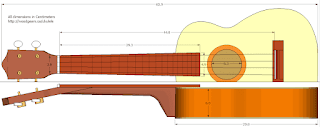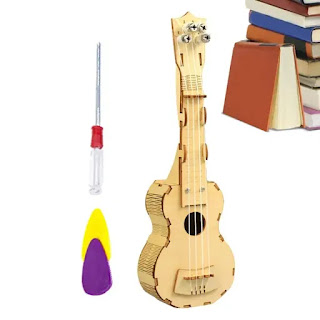Free Wooden Ukulele Build Plans for Beginners: Craft Your Own Island Sounds
The sweet, mellow tones of a ukulele beckon. But instead of buying one, imagine the satisfaction of crafting your own from scratch! This article provides you with the resources and guidance to build your very own ukulele, even if you're a complete beginner. Forget expensive kits; we'll explore free plans and guide you through the process, transforming raw wood into a beautiful, playable instrument.
Finding Your Perfect Ukulele Plans
The internet offers a treasure trove of free ukulele building plans. However, sifting through the options can feel overwhelming. Look for plans that offer detailed diagrams, clear instructions, and specifications for materials. Avoid plans that are overly vague or lack crucial dimensions. Remember, accuracy is key to a playable instrument. Pay close attention to the type of ukulele the plan offers â€" soprano, concert, tenor, or baritone â€" each having different dimensions and tuning requirements. Consider your skill level and choose a plan that matches your woodworking experience. Beginner plans often opt for simpler designs, minimizing complex joinery.
Where to Search for Free Plans
Start your search on popular woodworking forums and websites. Many experienced luthiers share their plans freely, contributing to the vibrant community of ukulele makers. YouTube tutorials can also be incredibly helpful; visual demonstrations can clarify intricate steps. Search using keywords like "free ukulele plans PDF," "beginner ukulele build," or "simple ukulele construction." Always verify the reliability of the source before committing to a plan. Look for plans with user reviews and comments indicating their success rate.
Gathering Your Materials and Tools
Once you've chosen your plan, meticulously gather the necessary materials. Accuracy here is vital. The plan will specify the type and dimensions of wood required â€" often mahogany, spruce, or koa. You'll need specific types of wood for the body, neck, and fretboard to achieve optimal sound quality and playability. In addition to wood, you’ll need strings, frets, tuning pegs, bridge, and binding material (if desired). Don't underestimate the importance of high-quality materials. They contribute significantly to the final sound and longevity of your ukulele.
Essential Tools for the Build
Building a ukulele requires several tools. While the exact tools will depend on the chosen plan, you'll likely need:
- Hand saws or a jigsaw
- Chisels and wood planes
- Sandpaper (various grits)
- Clamps
- Drill with various drill bits
- Measuring tools (ruler, tape measure)
- Fretting tools (optional, but recommended for precision)
- Glue (wood glue)
Investing in quality tools will significantly enhance your building experience and the outcome. Remember safety first â€" always wear appropriate safety glasses and hearing protection when using power tools.
The Building Process: A Step-by-Step Approach
Follow the plan diligently, taking your time with each step. Don't rush the process; meticulous work is essential for a well-playing ukulele. Start by carefully cutting out the body pieces according to the plan's specifications. Accurate cuts are crucial for a proper fit and finish. Next, carefully assemble the body, paying attention to the glue application and clamping process. Similarly, construct the neck, carefully shaping it to the desired profile and installing the frets with precision. Finally, assemble the completed neck and body, attach the bridge and tuning pegs, and string your instrument. Regularly refer to the plans and check your progress against the diagrams.
Finishing Touches and Final Tuning
Once the ukulele is assembled, meticulously sand all surfaces to a smooth finish. This eliminates any roughness and prepares the wood for the final finish. Apply several coats of your chosen finish (lacquer, shellac, or oil), allowing each coat to dry completely before applying the next. This protects the wood and enhances its appearance. After the finish has cured, carefully install the strings, tune your ukulele, and enjoy the fruits of your labor. You've crafted a unique instrument, full of character and your personal touch.


No comments:
Post a Comment